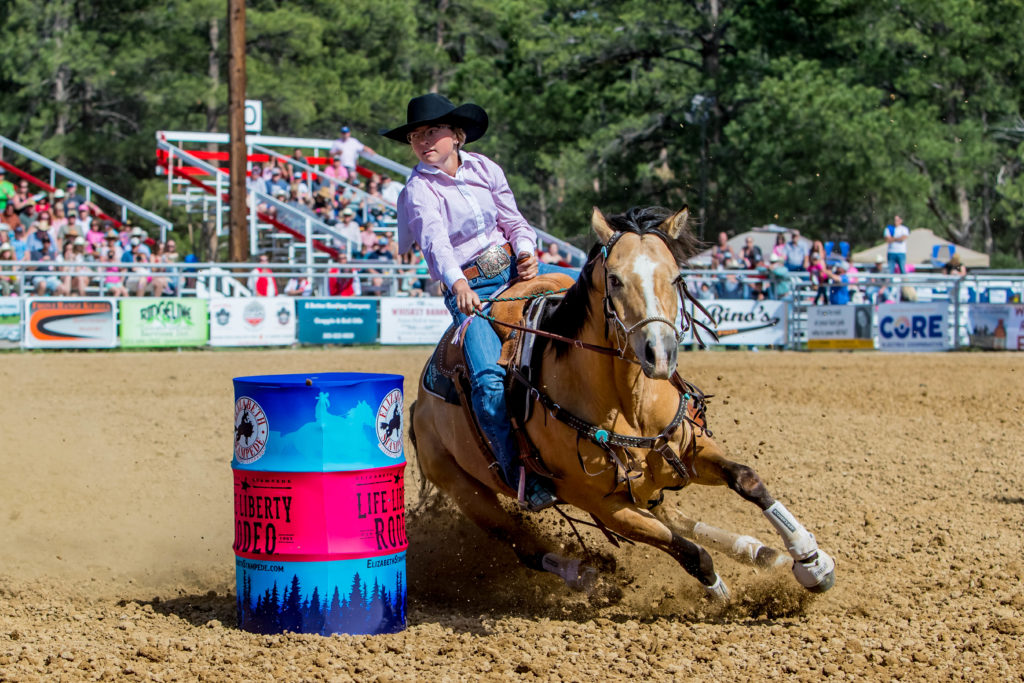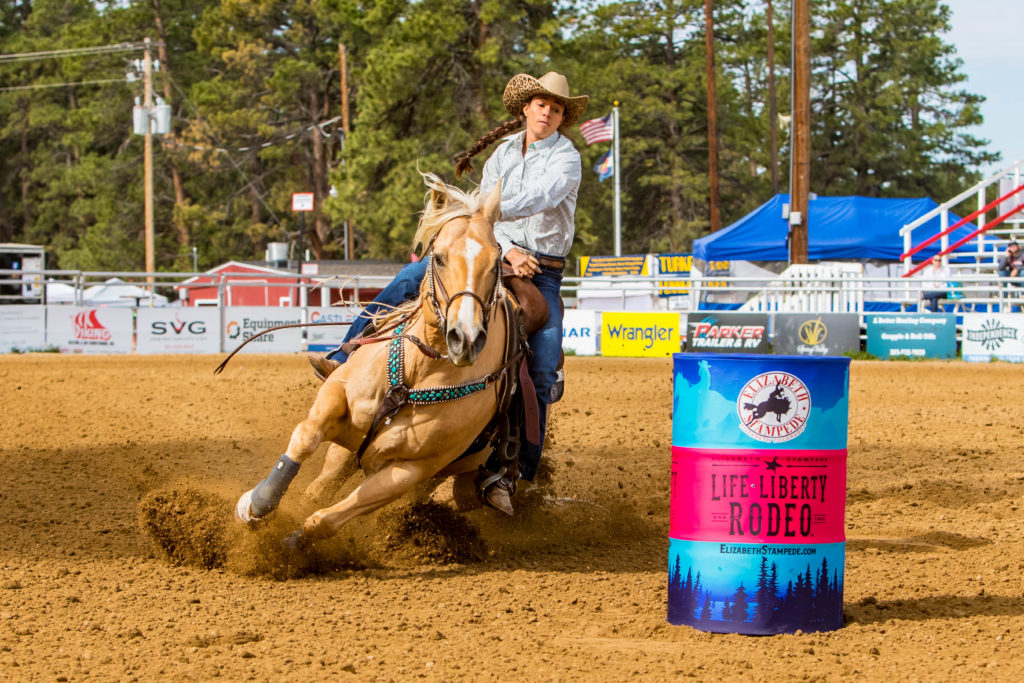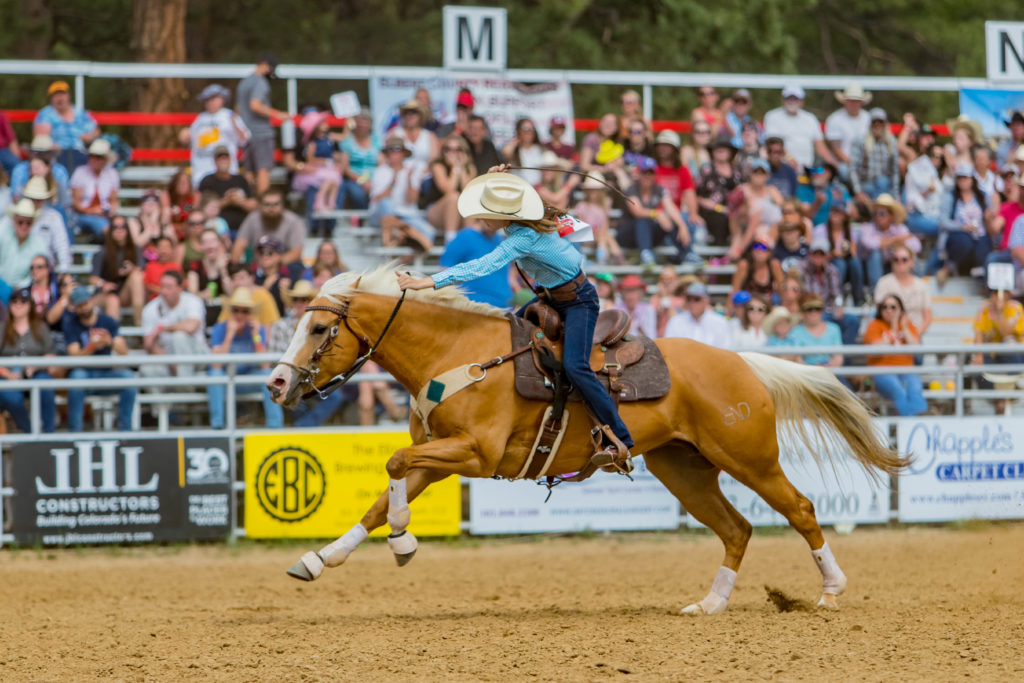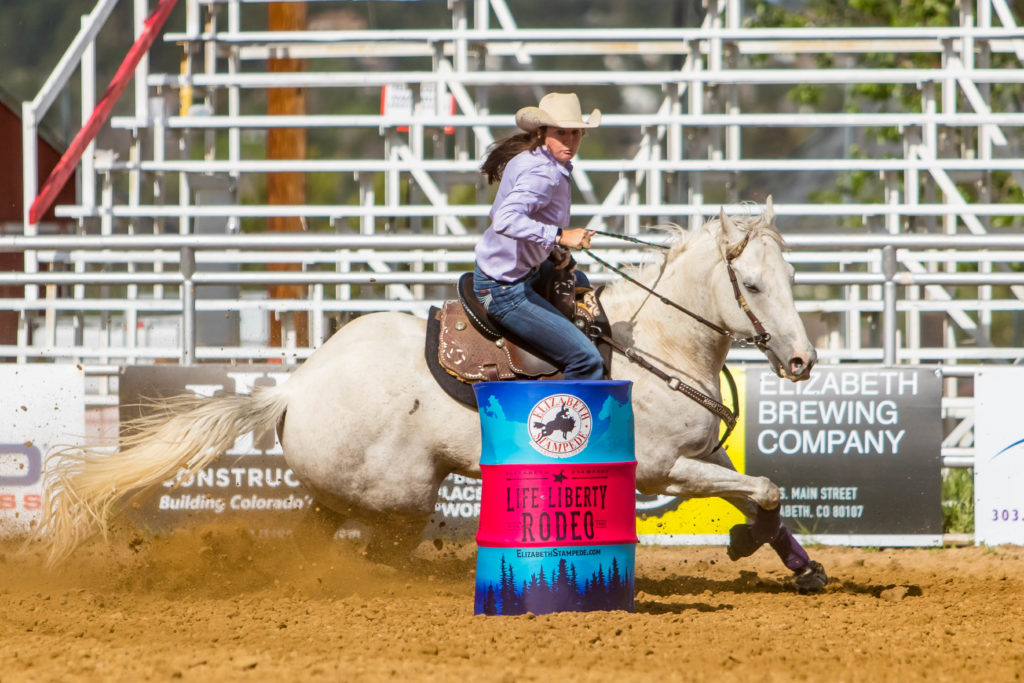For as long as most circuit athletes in the Mountain States can remember, the first weekend in June has signified the start of summer kicked off by Elizabeth Stampede festivities. Word on the street was the Stampede Committee had decided that in 2022 their arena surface would undergo a facelift. The $3,650-added rodeo featuring three perfs and a morning slack all held over the course of two days on June 4-5 typically draws top barrel racing talent, but in recent years its dirt had gained a reputation for being deep, shifty and sometimes slick. An award-winning small outdoor rodeo keen on contestant hospitality and attracting capacity crowds, the Stampede wasn’t willing to let a little dirt soil their cred with contestants or spectators. Thanks to savvy planning and soil analysis, the Elizabeth Stampede worked tirelessly to earn major props from barrel racers in 2022.
“It’s an awesome committee with awesome volunteers,” said 2022 Elizabeth Stampede champion barrel racer Kelly Yates. “What a great rodeo with all the trimmings, including the new ground! I just love this rodeo.”
| Read More: Michelle Darling Kicks Off ProRodeo Summer with Three Checks, Two Wins, and One Palomino Mare
Following the June 5 slack session, Barrel Racing Magazine caught up with Stampede President Traci McClain, herself a Women’s Professional Rodeo Association barrel racer, to learn more about every detail that went into revitalizing Elizabeth’s dirt.
BRM: How long had redoing the Elizabeth Stampede ground been in the works?
McClain: “In 2019 we noticed the ground wasn’t as good as we wanted it to be. We couldn’t hold it together, it wasn’t binding. When we couldn’t keep it consistent throughout slack, we started thinking about bringing in new ground. The intent was to do that in 2020, but then COVID hit. We didn’t even know if we could have a rodeo, so we held off for a year. This year, we decided to go ahead and make the investment in our ground even though we have plans to build a completely new arena here very soon. We know that we’ll have to pull all this ground out, but we’ll just store it after we pull down all the old bleachers and begin renovating. Our priority was for the ground to be safe for all our contestants and for all of our animal athletes as well.”
BRM: What was the first step for your committee to get the process of ground improvement underway?
McClain: “The WPRA had started the SAF (Safe Arena Footing) program, so we knew about that. We’d chatted with SAF representatives in the past at the Professional Rodeo Cowboys Association Convention, so I called to consult with them about what we needed to do to get things rolling. They were great, they give you great guidance. They told us how to go test the ground, so we went out in the fall and gathered soil samples at multiple areas around the arena. We prepared those samples as instructed, had them sent off and SAF came back with an analysis that told us pretty much what we’d expected to get back. With our ground it wasn’t binding like we needed because it had become sandier over time. They explained to us what they thought we were experiencing. They said, ‘If you put enough water on it your ground will probably be good, but it won’t hold consistently.’ What they said matched what we were seeing and with what the barrel racers were saying. Their analysis matched exactly so we knew we were on the right track. SAF told us what we’d need to add to the ground and gave us the appropriate ratios. From there, we went out and found a soil vendor who actually specializes in arenas. He looked at the analysis and said, ‘Yeah, that makes sense.’ So, we brought in a binding agent and started spreading it and mixing it with our existing dirt.”

BRM: How did your committee weigh the cost against the potential benefits of redoing Elizabeth’s ground?
McClain: “SAF told us the ratio of binder we’d need then we told them how deep we wanted to invest according to our rodeo budget. We looked at our immediate budget and weighed the decision knowing that we’re going to have to take all the ground out to renovate. But even knowing that we decided to move forward and said we’d see how it goes. Then, if we need to add more again next year we will because we can do it in increments. The reason we could afford to do it this year is because last year we had a really good year, despite not even knowing what was going to happen with restrictions.
“As a little aside, we didn’t know what COVID would look like. Would we have any sponsors? Could we even have spectators? We prepared three different budgets—one basing the costs and revenue on a normal rodeo year, one if we were told no spectators, and a third if they said we could only have a percentage of spectators. No spectators at all was actually not the worst-case scenario because if we had only contestants then we wouldn’t need a big scoreboard, we wouldn’t need all the portable toilets and other production elements you have to have to accommodate large crowds. The worst case would’ve been a limit to 50 percent spectators because then we wouldn’t make any money, but we’d still have all the expenses. We said, ‘OK, we’re just going to be prepared for only being able to have 50 percent of our spectators and go out and try to make up for that revenue in sponsorships.’ We didn’t know if that plan would work, but our community supported us in a big way. They told us ‘We want to have a rodeo!’ After all the time of sitting at home our community needed the rodeo. Businesses in our community sponsored like crazy and then two weeks before the rodeo everything was opened back up and we were able to have full spectators. We created a campaign called ‘Life, Liberty, Rodeo’ to reflect the importance of rodeo in our communities. It was amazing.”
BRM: You use a black widow arena groomer. Is there another tool you use in advance to rip your ground? How far in advance does the process begin?
McClain: “Typically, the black widow does what we need it to do. We usually start preparing the ground a few weeks in advance of our rodeo. We come in and rip it really deep to try and get the hard pan broken up first since the arena has sat dormant for long periods through winter. Then we’ll leave it like that for a little while unless our royalty needs to come in or something, in which case we’ll pack it, but ripping it helps break up that slick hard pan that can develop underneath.
“Normally we hold a jackpot barrel race two weeks before the rodeo, but this year our pre-rodeo events were all canceled because we had a foot of snow on the arena! No one could control that happening, so I was thrilled to see how good the ground was for that first perf!”
| Read More: Dirt Work: Award-Winning Rodeo Ground of 2021
BRM: What sort of feedback have you gotten from the barrel racers in response?
McClain: “I’ve gotten overwhelmingly positive comments. I sat and watched all of slack and I really didn’t see horses slipping or struggling or anything that caused me concern. I kept checking the ground, checking to make sure we weren’t getting a hard pan starting. It looked like it was really holding, even when there were tracks after the sixth runner right before the drag. We’d drag after six and fill it in and it stayed consistent all the way through.
“Thank you Elizabeth Stampede for an amazingly well produced rodeo. Every base was covered. So many awesome volunteers. A big thank you for improved parking and best of all the efforts on the new ground. So appreciated!”
— Wendy McKee
“I’d add that our circuit director Carla Beckett has been very helpful. Carla called and approached our committee about dragging after six and I think that’s been important. It makes a big difference and the barrel racers really appreciate that. Carla’s input on behalf of the WPRA has helped me, as a barrel racer, explain to other people on our committee why some horses have had trouble in the past. I could watch it and point things out, but it always helps when you have someone knowledgeable like Carla backing up your point of view and helping educate people who may never have run barrels on how important safe and even ground is to having a fast, professional playing field where people feel like they have a fair chance.”


“I think the ground at Elizabeth was the best it’s been in years! The Elizabeth Rodeo Committee did everything in their power to create safe, fair ground conditions. Also, the effort to do a tractor drag after six helped give everyone a chance. I appreciate it so much when a committee goes all-in so we can compete with confidence. Their hospitality and hard work did not go unnoticed.”
– Kim Schulze








Come back next week for Part 2 of our interview with Traci McClain on how the Elizabeth Rodeo Committee works to positively impact their local community.





